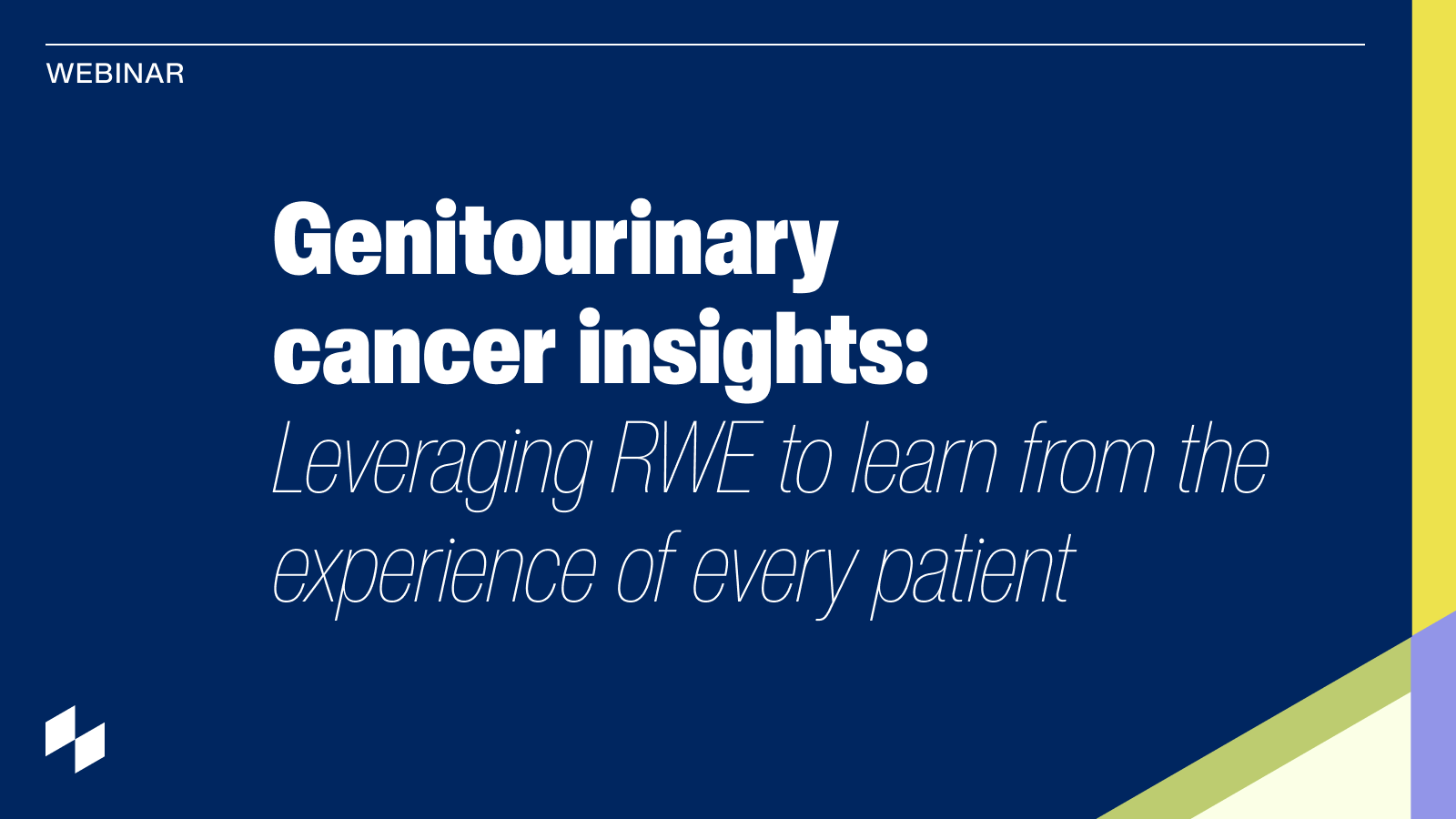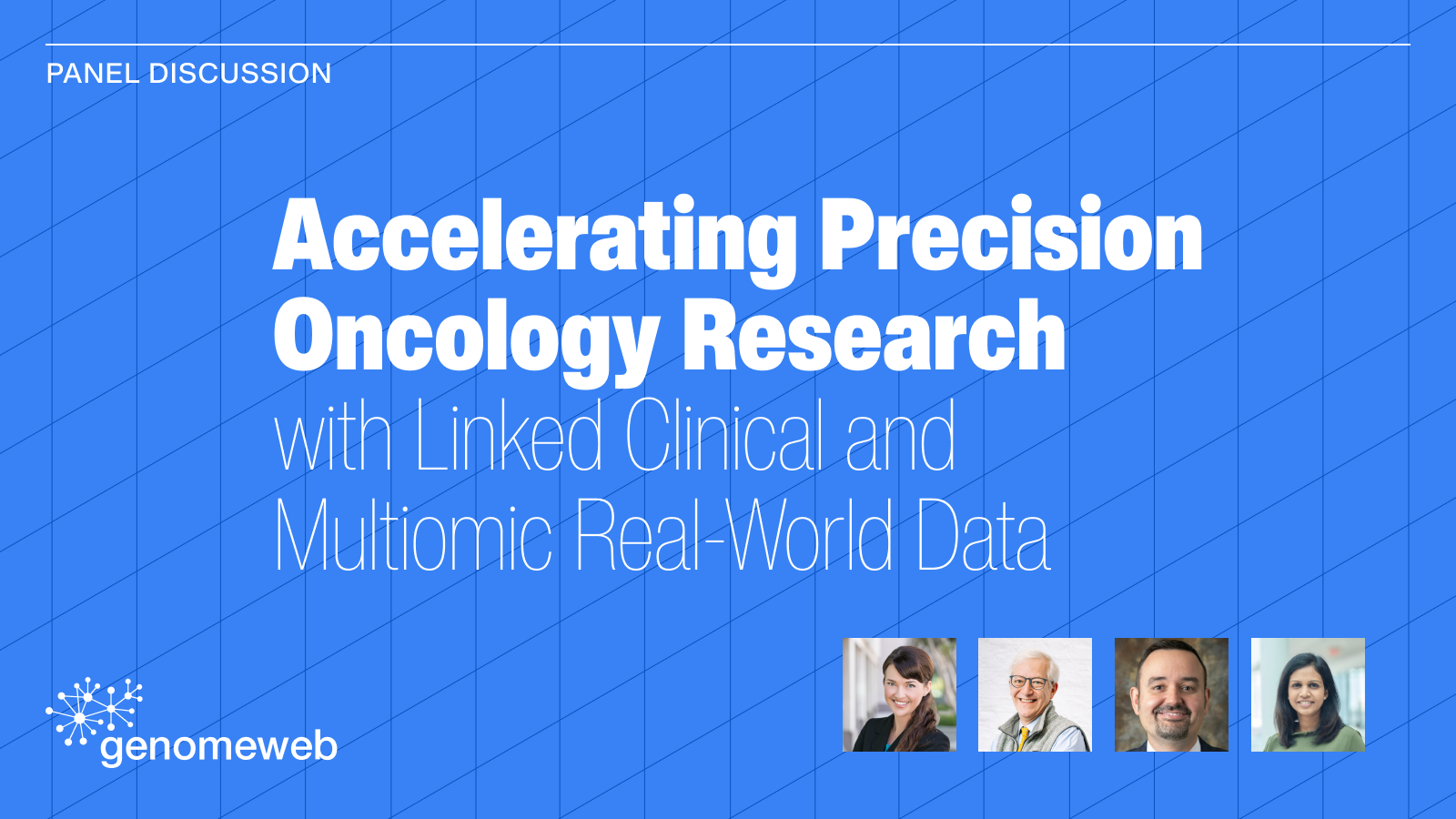This talk is part of the ResearchX session: The role of real-world data in tumor-agnostic drug development.
Sections include:
- Tumor site agnostic drug development: A genomics perspective
- Prevalence of TMB-H and association with survival in patients with less common solid tumors
- Characteristics and outcomes of real-world patients with MSI-H solid tumors treated with pembrolizumab
- Trends and challenges in tumor-agnostic drug development

Transcript
Mike Spencer: Thanks, Olivier, and thanks for the opportunity to speak today. So despite my accent, I am based in the US but I'm going to be taking a little bit of an ex-US view and there's been lots of really exciting signs and opportunities presented. But I'm going to be focusing a little bit more on the challenges, I guess, than some of the previous speakers. So just want to go to the next slide. Thanks, Olivier. So this is some data from EFPIA, the European Federation of Pharmaceutical Industry Associations, where IQVIA collects for them the number of days between regulatory approval, and access to medicines in Europe.
This is specifically the oncology data and what you can see is a bit of a depressing picture here of the gap between regulators making a call about the safety and efficacy and the HTA bodies, and payers making the product available to patients in the countries. I think what we're seeing is there's increasing... From the regulators, increasing flexibility, forward looking approach, and taking into account real-world data, and novel approaches, like tumor-agnostic approvals, but still having the HTA bodies taking a much more conservative view.
I think the tumor-agnostic approach is really an extreme example of that, where this is a really very novel approach to drug development, and regulatory approval and the HTA bodies and payers are somewhat behind. On the next slide please. There's three areas that I wanted to pick up on today. The first was in terms of the testing challenges, both from a practical point of view, but also from the way our HTA bodies, particularly look at that.
The second one was in terms of the health technology assessment methods and the principles by which they work and how that impacts tumor-agnostic development. The final one was around evidence generation and acceptance to support demonstrating the value of these tumor-agnostic indications. So I just want to go on to the next slide please.
So in terms of testing, so the first thing really is and I'm sure there are people on the call who know more about this than myself, but just in terms of the diagnostic pathways, outside the US, having those pathways which ensure that the testing data is in the hands of the physician at a timely manner to make those treatment decisions is a challenge in itself. When it comes to how the health technology assessment agencies and the payers are thinking about this, then the question of cost per identified patient becomes very relevant. So if you have a rare marker that you're looking for, and a cost associated with that, obviously, to find one patient can be pretty expensive if you're having to test 100 patients to identify one with the relevant marker.
And if you look over on the right hand side of this slide, this is from the entrectnib HTA assessment through the UK's NICE. And you can see there just the wording on the bottom that says, "In the base case scenario, 100% of the incremental screening costs are applied to entrectnib." What you have here really is a catch 22 --- in the less treatments that are available that can leverage the testing, the more those costs get piled on to the treatments that are coming through. And that then becomes a block to those treatments being approved and the uptake of those treatments so you're caught in this cycle.
And then, what that leads to is this issue with logistics and infrastructure, where there's really a tragedy of the commons, where if there's not the treatments being approved, that need the testing, then no one's investing in it. And it's all the cost of input on to the companies, or being at least wrapped into those HTA assessments and cost effectiveness assessments. So you go on to the next slide.
So in terms of the methods and principles, health technology assessment agencies really have grown from the evidence-based medicine paradigm. And so, randomized clinical trials really take primacy there. We have some specific challenges, I think, here with tumor-agnostic approach, both in terms of equipoise. So, do we have acceptance from the health technology assessment agencies that even though these patients by definition, normally, from an indication point of view, have no other options, that an option that is, maybe exquisitely targeted to a driving mutation in their tumor means that there's no equipoise to run a randomized trial?
That's something I think that seems maybe obvious from a development point of view. But it's been severely challenged, when we go to the health technology assessment agencies, and often is seen as, well, that's the company's problem to try and work around that, rather than that being a fundamental part of this kind of drug development. Rarity of course, becomes another challenge there, where, again, the agencies are not going to relax their standards on the basis that it's difficult to run a study, when there's this level of rarity.
Then one thing we have to remember is that the incentives for these kind of agencies are maybe different too from the regulators. They are looking to find gaps in the evidence based on the company, because whilst there really should be a separation, good HTA principles would say there's a separation between the scientific assessment and the pricing negotiations, that's often not the case in reality.
The other point, in a similar vein is around marginal decision-making. From a payer HTA body point of view, it's not just saying, well, this treatment is effective, or this is something that's worth doing it and in which patients do I get the best bang for my buck. And so, that really challenges the idea of a tumor-agnostic approval where you're looking across multiple tumor types.
Now, of course, within the standard paradigm, you're always going to have heterogeneity within studies. In this case, you maybe have heterogeneity of tumor types for homogeneity around the driver. In normal drug development, you may have multiple biomarkers, but within a single tumor, but this is a novel approach. And you can see on the right here again from entrectnib but this time looking at the German HTA agency. If you can read German you can see the verbatim but on the right, in English, no tumor individual assessment and that's relevant and required. No relevant comparative data because there was no randomized trial.
There was some real-world data brought into this process with the HTA body, but they didn't consider that the effect size was big enough to overcome their concerns about confounding and bias, and no data on pediatric indications. And so, they basically assess that with no relevant data and so forth they couldn't assign any benefit to treatment. Move to the next slide. Thanks. And then evidence generation and acceptance. I have referred to this already.
One of the key principles for health technology assessment agencies, is the idea of what's the appropriate comparator? What's the cost of that? What are the benefits of that comparator and how do you compare? Well, again, if you're looking at an indication statement that says, who have no satisfactory treatment options, well, what is that appropriate comparator and can you even run a clinical study?
When it comes to real-world evidence availability, where we just heard the work that the Flatiron [team] are doing on this, but it's difficult to have access to biomarker data for this specific market, and may be relevant to your approval in the real-world to do these indirect comparisons, external controls, if no treatment exists, because why are people going to be testing for something if there's no treatment? The thing that I think that Flatiron are trying to address here is that most data sources that we have access to are organized by tumor, so vertically from a tumor point of view rather than transversally from the biomarker genomic point of view.
And then, finally, just going back to the previous point I had was, how acceptable is RWE as a decision-making evidence base? So some HTA bodies simply won't accept RWE, and some set the bar impossibly high, both in terms of their expectations of how data is collected, but also the effect size they're wanting to see. Next slide, thanks. So what do we need? Well, investment in testing, I think we have to somehow break this tragedy of the commons outside the US where the incentives for testing are low. And therefore, it's difficult then to have an interesting paradigm built that can support it.
A pragmatism with regards to evidence, but also, I think, a need for us as industry to show the validity of these kind of external controls, particularly when we are looking at these rare tumor types at the very end of the treatment line, so that maybe we can accept a lower bar when it comes to the effect size we need to see. So building the validity around that, but also pragmatism from health energy investment agencies and payers.
And then flexible access models. We're often coming to market with relatively limited amounts of data. A lot of the data that we have on the treatment is going to be in the real-world post approval. So how can we build access models that leverage that data, the increasing certainty we have over time to make sure that patients can get access as quickly as possible, but then the data can support the continued approval and the pricing? So I will stop there, Olivier. And hopefully, we can help with the questions directed to me.


